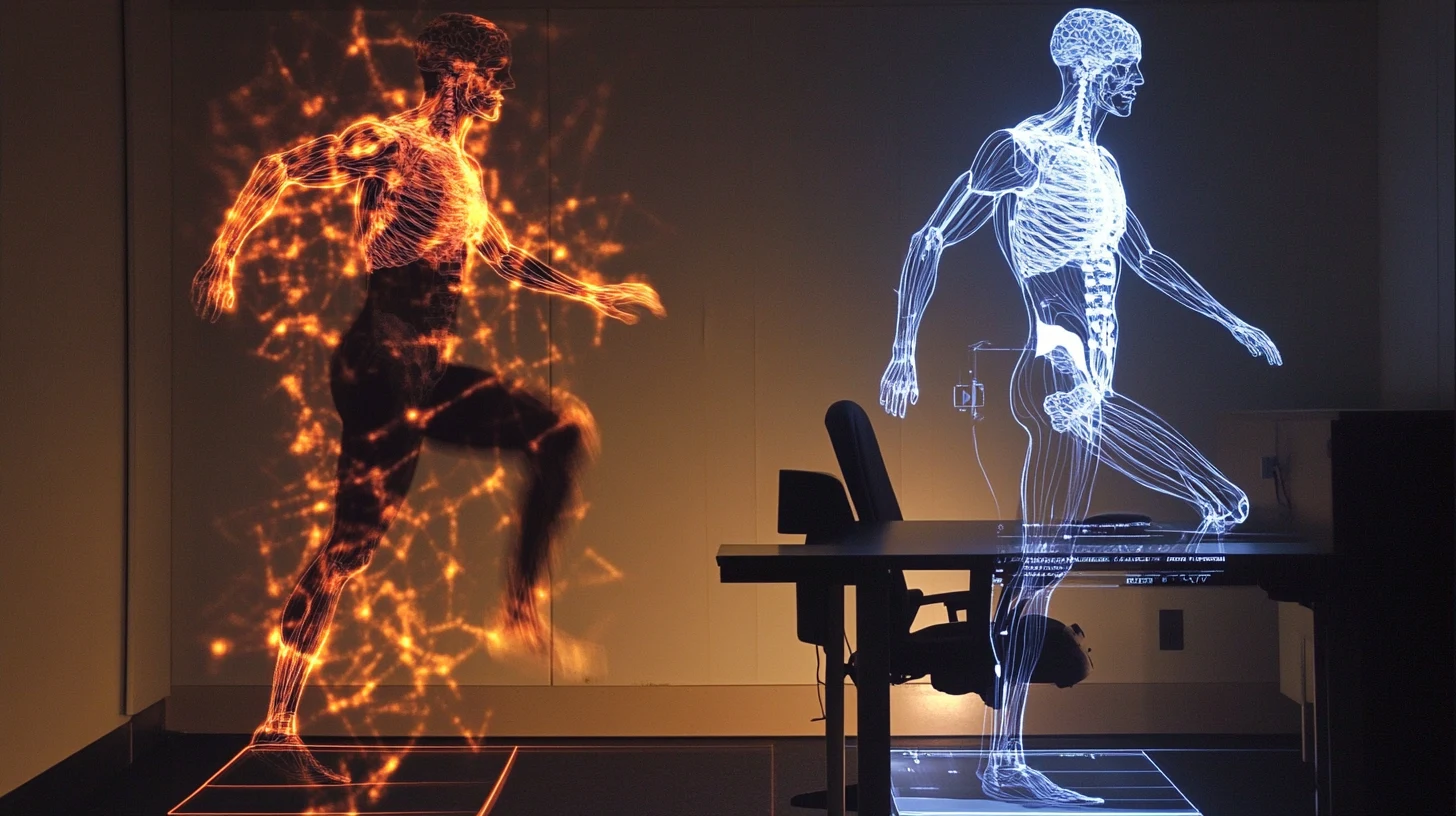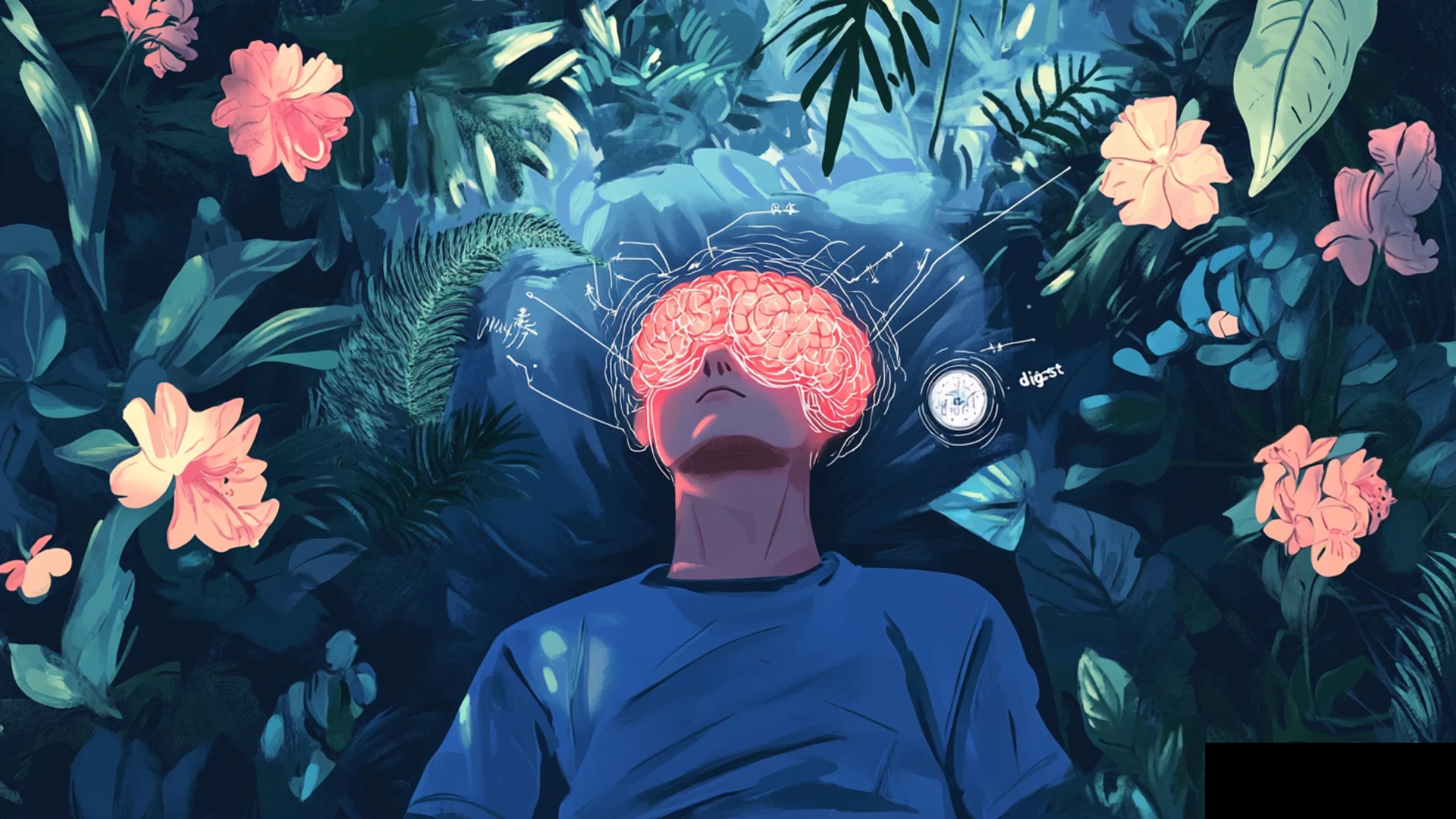It’s 1:14 AM. Your assignment is due in less than eight hours.
- You’ve been “working” on it for days, but somehow you’ve only written your name and the date.
- Your room is a disaster.
- Your water bottle is empty.
- You’ve reorganized your Spotify playlists three times.
And now you’re reading this article instead of doing your work—which means we need to talk about the brutal reality of trying to focus when your attention span is already decimated.
The Uncomfortable Truth About Focus#

Let’s be real: most advice about improving focus assumes you’re starting from a decent baseline. But what about when your attention span is already shattered into a thousand pieces?
When you’re three energy drinks deep, your deadline is looming, and your brain feels like it’s been replaced with static?
The Truth: Focus operates as a neurological state where your prefrontal cortex requires adequate fuel and precise chemical balance to maintain attention on a single task.
Willpower becomes irrelevant when your brain lacks the physical resources to sustain concentration. Depleted brains need physiological intervention, not more mental effort.
Abandon the seductive myth of “just try harder.” Your brain runs on actual biological resources—glucose, oxygen, and neurotransmitters.
When these physical components are severely depleted, willpower becomes as useful as pressing the gas pedal in a car with an empty tank. The engine of attention requires actual fuel, not motivational speeches.
What’s Actually Happening in Your Brain Right Now#
When your attention is completely scattered, these fundamental mechanisms are at work:
- Your brain’s energy reserves are depleted. Glucose and oxygen are being unevenly distributed.
- Your neurochemical balance is off. Stress hormones are likely elevated while dopamine regulation is disrupted.
- Your survival circuits are activated. Uncertainty triggers a threat response, making your brain scan for dangers rather than concentrate.
- Your reward pathways are hijacked. The digital environment has conditioned your brain to expect constant stimulation and immediate rewards.
Emergency Focus Protocol#
When you’re already in crisis mode, you need methods that work with your depleted state—not against it.
Stage 1: Neurological Reset (5 minutes)#
First, we need to recalibrate your brain’s basic operating conditions:
Drink 16oz of water immediately. Even mild dehydration (1-2% body weight) constricts blood vessels in your brain, reducing cognitive function by up to 30%. Room temperature water absorbs faster than cold water.
Consume specific brain fuel foods. Your depleted brain needs:
- Fast-acting protein sources: 2-3 eggs, a handful of nuts, greek yogurt, or 2 tablespoons of nut butter provide tyrosine, which converts directly to dopamine
- Complex carbohydrates: Half a sweet potato, a slice of whole grain bread, or half cup of oatmeal release glucose gradually rather than causing insulin spikes that lead to crashes
- Avoid sugary energy bars that create a glucose rollercoaster in your bloodstream
Tactical breathing pattern: 4-4-4-4. Inhale through your nose for 4 counts, hold for 4, exhale slowly through your mouth for 4, hold for 4. Repeat 4 times. This activates your vagus nerve, shifting your autonomic nervous system from sympathetic (anxious, scattered) to parasympathetic (calm, focused) dominance within 60-90 seconds.
Change your physical state through movement. Do 25 jumping jacks, 10 pushups, or run in place for 30 seconds—hard enough to feel your heart rate increase but not to the point of exhaustion. This rapidly increases cerebral blood flow and triggers release of BDNF (Brain-Derived Neurotrophic Factor), which immediately enhances neural connectivity.

Stage 2: Environment Modification (2 minutes)#
Next, create an environment that requires less willpower to stay focused in:
Clear visual field completely. Remove every object not directly related to your task from your line of sight. Each visual stimulus—even a harmless water bottle or notebook—consumes processing power in your visual cortex. Your brain automatically allocates resources to process every object in view, creating a constant attentional tax. Put unnecessary items in drawers or behind you, not just pushed aside.
Execute digital quarantine. Don’t just silence notifications—eliminate their possibility entirely. Put devices in airplane mode, physically place them in another room, or use blocking software like Freedom or Cold Turkey that prevents access for predetermined time periods. The mere potential for a notification triggers anticipatory dopamine circuits that erode focus.
Lower the environmental temperature to 68°F/20°C. Cornell University research shows cognitive performance peaks in this specific temperature range. Cooler environments increase norepinephrine production, a neurotransmitter critical for attention and alertness. If you can’t control the thermostat, remove layers of clothing or use a small fan directed at your face and neck where temperature receptors are concentrated.
Create contrasting light conditions. Make your workspace the brightest area in an otherwise dim room, producing a spotlight effect that exploits your brain’s natural tendency to orient toward light sources. Position a desk lamp to illuminate only your work area while keeping ambient lighting minimal. This contrast creates a psychological workspace boundary that your brain recognizes as the focus zone.
Stage 3: The 10-Minute Commitment (10 minutes)#
Your brain’s last line of defense against focus is the perception that the task is too big. We’ll bypass this:
The specific 10-minute protocol:
- Set a timer for exactly 10 minutes.
- Write down specifically what you will accomplish in these 10 minutes. Make it ridiculously small.
- Remove all possible distractions from reach.
- Work with complete focus for just 10 minutes.
- When the timer goes off, take a 2-minute break, then reset for another 10.
“The 10-minute rule works because it circumvents your brain’s threat-detection system. You’re not asking your brain to focus for hours—just for 10 minutes. Almost anyone can do almost anything for 10 minutes.”
Desperate Times, Desperate Measures: The Last-Resort Toolkit#
The Nuclear Option
Extreme Cases
When nothing else works, employ the "study bunker" approach: Find a completely neutral environment like a library study room or empty classroom. Bring only what you need. Tell someone your plan and when you'll be done (accountability). Pre-commit to a specific output. This environment restriction forces focus by eliminating all other options.Cognitive Offloading
Working Memory Hack
When your brain can't hold thoughts, externalize everything. Use paper, not digital tools. Draw mind maps. Write questions. Create physical flashcards. When your internal working memory is compromised, externalizing cognitive processes reduces the energy cost of learning.Dopamine Recalibration
Reward System Reset
Create artificial stakes and rewards that work immediately. Tell someone you'll pay them $20 if you don't finish in the next hour. Put a favorite snack in view that you can only have upon completion. These concrete stakes hack your brain's reward circuitry when your natural motivation systems are depleted.Attention Anchoring
Focus Point
Use a physical object as a focus totem. Place it in your workspace. Whenever you notice your attention drifting, touch the object and bring your focus back to the task. This creates a tangible anchor for your scattered attention and builds a physical association with refocusing.
The Truth About Stimulants and Focus#
Let’s address the elephant in the room: caffeine, energy drinks, and other stimulants.
The reality is that stimulants:
- Work in the short term by increasing catecholamine release (dopamine, norepinephrine)
- Create diminishing returns with repeated use
- Eventually lead to deeper crashes
- Impact sleep quality even when you can fall asleep
When you’re already in crisis mode, proper timing becomes critical:
Rather than maximizing caffeine intake, the smarter approach is strategic microdosing: smaller amounts (50-100mg) taken more frequently rather than large doses all at once.
When You Need to Actually Remember This Stuff#
When both your focus and memory systems are compromised, but you still need to learn material for an exam, specialized approaches are required:
The Connection Method: Rather than trying to memorize isolated facts, create bizarre, vivid connections between what you already know and new information. The more absurd the connection, the better it sticks in emergency scenarios.
The Spaced Repetition Emergency Protocol: Review material in decreasing intervals:
- First review: Immediately after learning
- Second review: 15-20 minutes later
- Third review: 1 hour later
- Fourth review: 3 hours later
- Final review: Right before needed (exam, presentation, etc.)
The Feynman Output Technique: Explaining concepts aloud—even to an imaginary person or rubber duck—forces active engagement and reveals gaps in understanding.
The Recovery Protocol#

After the deadline passes and the emergency focus session ends, your brain needs deliberate recovery:
- Sleep debt repayment: Prioritize 9+ hours of sleep for the next 2-3 nights
- Dopamine detox: Limit high-stimulation activities for 24-48 hours
- Nature exposure: 30+ minutes in natural settings helps reset attention networks
- Cognitive downtime: Schedule at least one day with no complex thinking demands
Your focus capacity is like a muscle—it can be strengthened over time, but also requires recovery after intense exertion.
The Long Game#
While this article focuses on emergency measures when your attention is already decimated, the long-term solution involves rebuilding your baseline focus capacity through consistent practices:
Attention Span Workouts
Daily Practice
Start with just 5 minutes of completely focused work, gradually increasing by 5 minutes each week. Like weight training, progressive overload builds mental endurance.Dopamine Sensitivity Training
Weekly Practice
Designate 24 hours each week as a "low dopamine day" with minimal digital stimulation, reduced sugar, and simple activities. This helps recalibrate reward pathways.Sleep Hygiene Overhaul
Nightly Practice
Prioritize 7-9 hours of quality sleep with consistent bed/wake times. Sleep is when your focus systems physically repair and rebuild.
What Makes Focus Happen#
When your attention span is already wrecked, you can still trigger these core mechanisms:
Manipulate the importance factor: Create concrete, immediate consequences for task completion. Send a friend $50 with instructions to donate it to a cause you hate if you don’t finish by your deadline. Tell your professor exactly when they’ll receive your assignment. Make public commitments with real social stakes. Your brain prioritizes tasks with genuine consequences over abstractly “important” work.
Exploit the novelty bias: Your attention system automatically perks up when it encounters new stimuli. Change your physical study location every 30 minutes. Switch between handwriting and typing. Use different colored pens or papers. Alternate between reading aloud and silently. These novelty injections reset your attention circuitry without requiring additional willpower.
Activate the threat response: Set a timer for absurdly short intervals (7 minutes, not 30). Use apps like Write or Die that delete your work if you stop typing. Your brain’s threat-detection system will temporarily override fatigue to respond to immediate, specific threats—creating a focused alertness that’s otherwise impossible in your depleted state.
Hack the reward circuit: Place a piece of chocolate or other highly-desired reward visibly on your desk, only to be consumed after completing the next micro-task. Break larger rewards into many small pieces, creating frequent reinforcement. Your dopamine system responds more strongly to multiple small rewards than single large ones, especially when they’re physically present rather than just promised.
This is the psychological foundation behind every focus technique that actually works.
Accept the Reality, Then Manipulate It#
Focus exists as a concrete neurological condition manufactured through precise environmental setups, physiological inputs, and psychological triggers. Even the most scatter-brained, depleted, and deadline-panicked brain can achieve periods of remarkable concentration when these conditions align. Your capacity for attention resembles a physical system with specific requirements rather than a mystical talent possessed only by the naturally disciplined.
The next time you find yourself at 1 AM staring at an untouched assignment with a brain buzzing like television static, remember: your neural hardware remains fully capable of intense concentration. It simply requires the correct emergency protocols to reboot its focus capabilities. The difference between panic and productivity often comes down to these specific interventions rather than some mysterious quality of grit or willpower.
🔍 Frequently Asked Questions
Does listening to music help or hurt focus when your attention is already compromised?
Is it better to pull an all-nighter or get some sleep when you're behind on work?
How do I recover my focus ability after burnout or prolonged stress?
Can certain foods actually improve focus in an emergency?
Yes, but not the ones typically marketed as “brain foods.” In an emergency focus situation, you need:
- Fast glucose + protein (example: apple with peanut butter)
- Choline sources for acetylcholine production (eggs are ideal)
- Tyrosine-rich foods for dopamine production (meat, eggs, beans)
- Adequate hydration with electrolytes
The worst choices are pure sugar (crashes) and heavy carb meals (triggers drowsiness).
Is medication the only solution for severe attention issues?
Remember: Your capacity for sustained attention operates simultaneously as a trainable skill, a depletable biological resource, and a hackable neural system. The mechanics of focus follow predictable patterns based on your brain’s evolutionary design. Master these patterns and you control the most valuable cognitive asset in today’s attention-scarce world.
